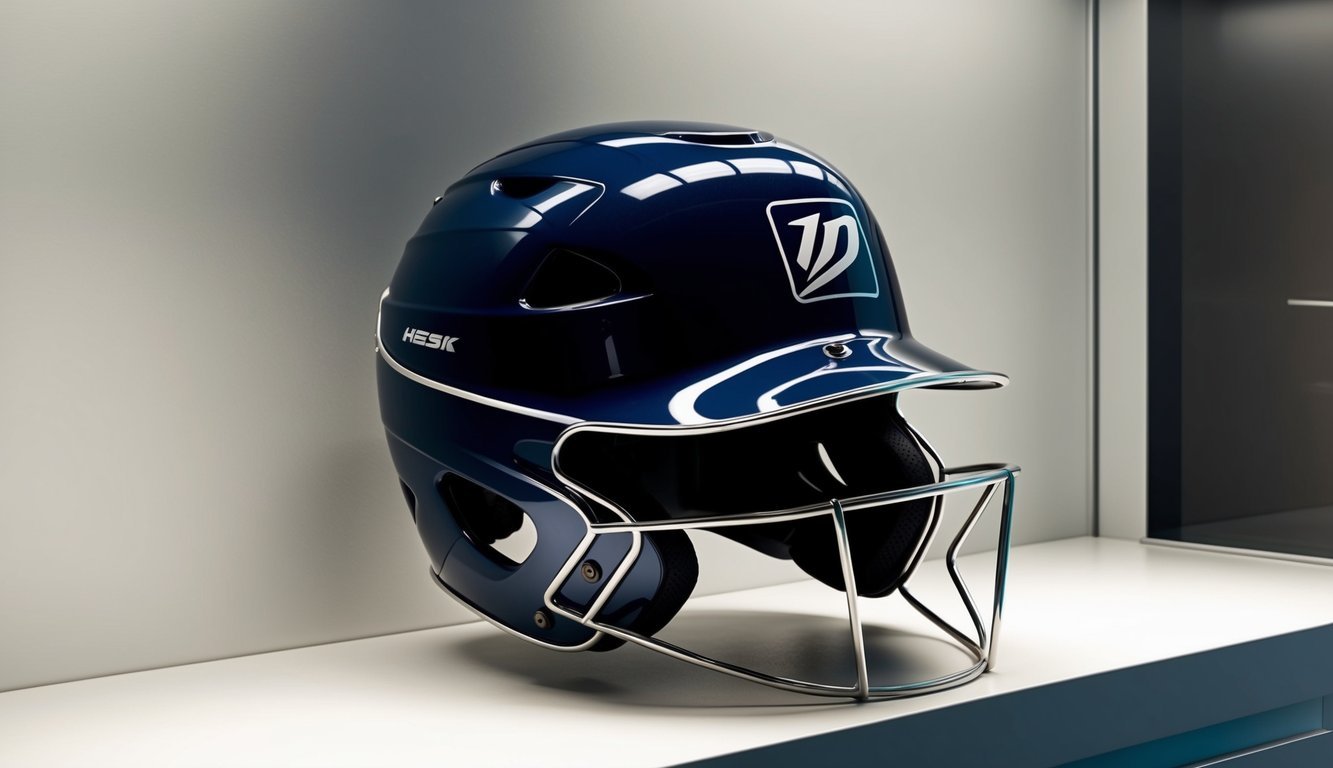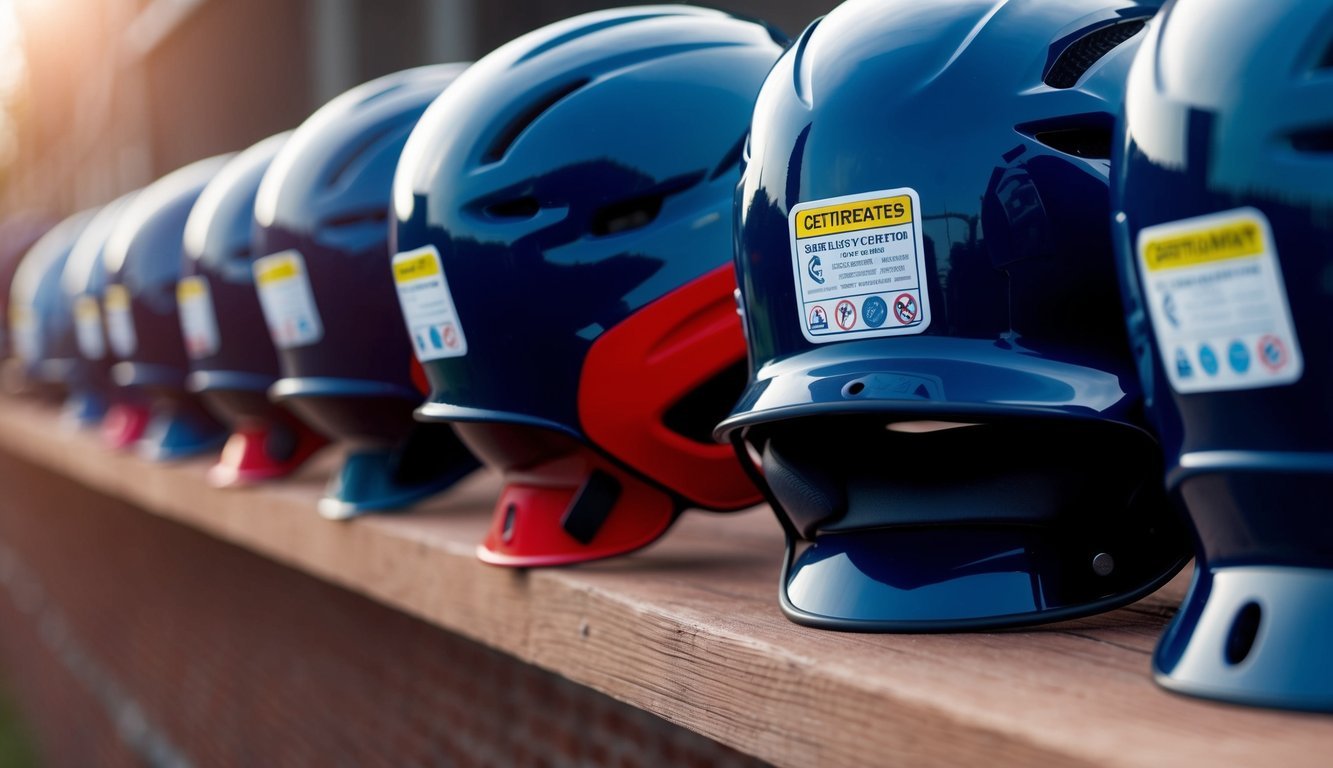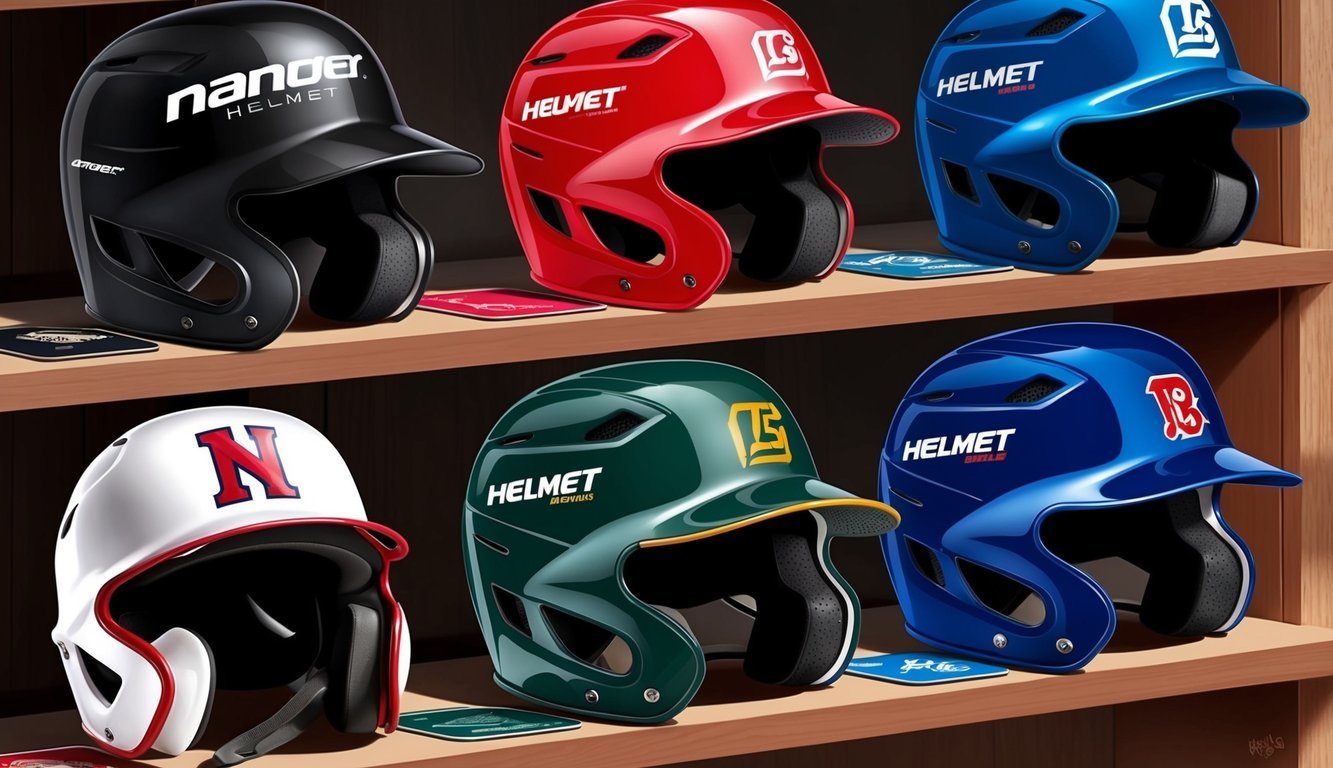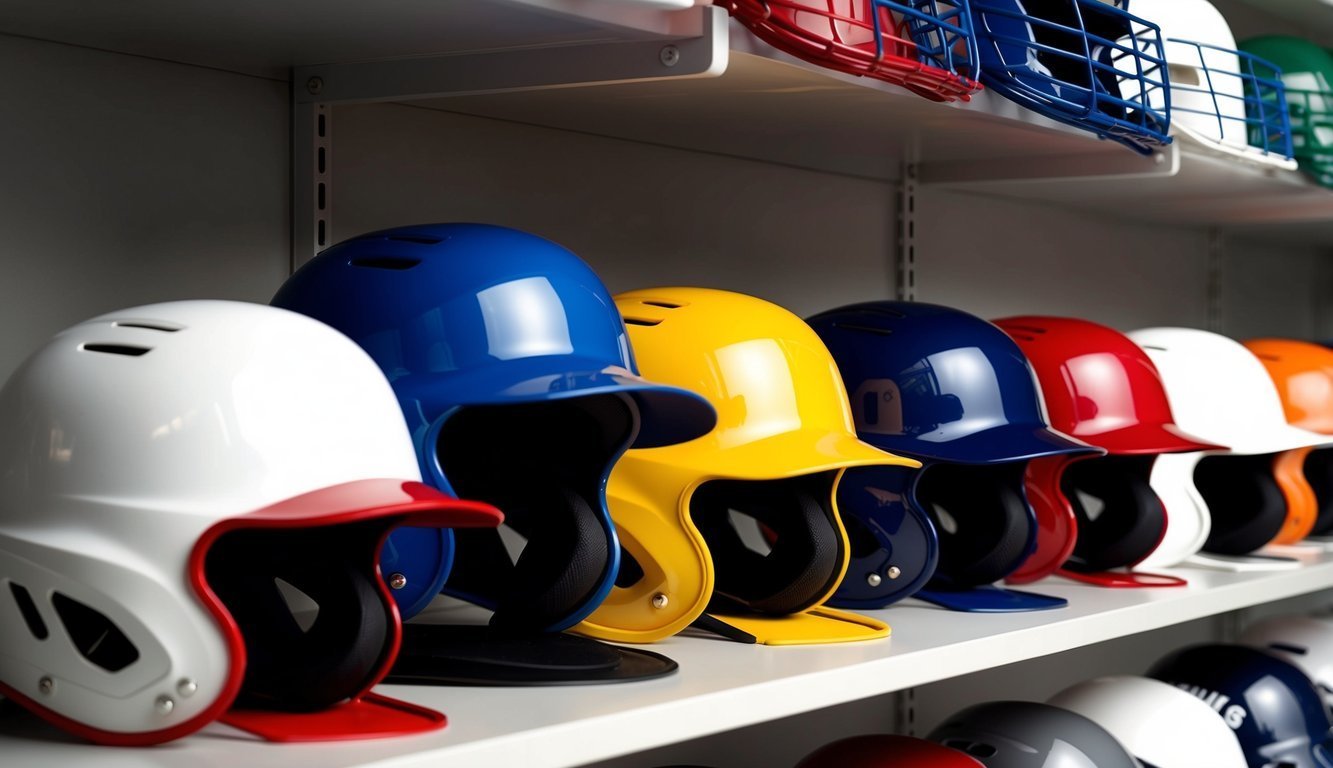Baseball helmets are an essential piece of safety equipment for players of all ages and skill levels.
They protect batters from errant pitches and foul balls that could cause serious injury.
Modern helmets come in a variety of styles and designs to suit different preferences and needs.
The best baseball helmets combine durability, comfort, and protection to keep players safe without hindering performance. Many feature moisture-wicking padding and ventilation to help players stay cool during hot games.
Some helmets also include additional safety elements like jaw guards or face masks for extra protection.
When shopping for a baseball helmet, players can choose from trusted brands like Rawlings, Easton, and Boombah.
These companies offer helmets for both youth and adult players in a wide range of colors and styles.
Some even provide customization options to match team uniforms or showcase a player’s personal style on the field.
History and Evolution of Baseball Helmets
Baseball helmets have undergone significant changes since their inception, improving player safety and comfort.
Innovations in materials and design have shaped the protective headgear worn today.
The Birth of the Baseball Helmet
The first baseball helmet emerged in 1907 when Roger Bresnahan, a New York Giants catcher, created crude leather headgear.
This pioneering effort laid the groundwork for future developments.
His invention aimed to protect players from severe head injuries, though it was met with skepticism at the time.
Despite initial resistance, the idea gradually gained acceptance, influencing safety standards in the sport.
Just as the formation of early baseball clubs helped shape the game’s structure, Bresnahan’s helmet played a crucial role in advancing player safety.
In 1939, the International League took a major step by adding “safety cap or helmet” to its official equipment list.
Buster Mills became the league’s first player to wear a helmet, marking a pivotal moment in baseball safety.
As awareness grew, more players began adopting protective headwear.
The transition wasn’t immediate, but it set the stage for widespread acceptance of helmets in professional baseball.
Technological Advancements in Helmet Design
Cork-based helmets represented a significant leap forward, offering improved protection against head injuries.
This innovation paved the way for further enhancements in baseball helmet technology.
In 2005, Major League Baseball tested a new helmet design for the first time in 30 years.
The updated model featured a molded crown, side and back vents, and larger ear holes.
Most players embraced this new design, which remains popular today.
These improvements enhanced both safety and comfort, allowing players to perform at their best while reducing injury risks.
Ongoing research continues to drive advancements in baseball helmet technology, ensuring players have access to the best possible protection on the field.
Selecting the Right Baseball Helmet
Choosing the perfect baseball helmet involves considering size, fit, and customization options.
Safety and comfort are paramount for players of all ages.
Understanding Helmet Sizing and Fit
Baseball helmets come in various sizes to accommodate different head shapes.
Measure your head circumference to determine the right size.
A properly fitting helmet should sit snugly on the head without wobbling or sliding.
Most helmets use hat sizes as a reference.
For example, a 6 3/4″ to 7 1/4″ head circumference typically corresponds to a small/medium helmet.
Always try on helmets before purchasing if possible.
Look for helmets with adjustable padding systems.
These allow for a more precise fit and can be modified as needed.
The helmet should cover the ears and sit about an inch above the eyebrows.
Custom Options for Added Individuality
Many manufacturers offer customization options to make helmets unique.
Players can choose from a range of colors and finishes to match team uniforms or personal preferences.
Some helmets allow for adding decals or airbrushed designs.
This lets players express their personality while maintaining safety standards.
Custom padding kits are available for fine-tuning fit.
These can help address specific comfort needs or accommodate unique head shapes.
Faceguards and jaw protectors can be added to most helmets.
These provide extra protection for batters who prefer additional coverage.
Youth Helmets and Player Development
Youth helmets are designed with growing players in mind.
Many feature expandable shells or removable padding to accommodate growth spurts.
Look for lightweight materials in youth helmets.
This reduces strain on young necks and encourages proper batting stance development.
Some youth helmets come with educational features.
These may include printed batting tips or proper care instructions inside the shell.
Consider helmets with extended coverage for T-ball and rookie players.
These provide extra protection as young athletes develop their skills and awareness on the field.
Features of High-Quality Batting Helmets

Modern batting helmets blend advanced materials and innovative designs to maximize player protection and comfort.
They incorporate impact-absorbing technologies and ventilation systems to enhance safety and performance at the plate.
Material Innovations and Impact Absorption
High-quality batting helmets utilize cutting-edge materials for superior protection.
Many feature shells made of ABS plastic, known for its durability and impact resistance.
Inside, EVA foam and compression molded pads absorb and disperse energy from ball impacts.
Some helmets incorporate dual-density foam, combining soft and firm layers for comfort and protection.
Fully wrapped ear pads provide additional safeguarding for vulnerable areas.
These materials work together to minimize the risk of injury from high-speed pitches.
Advanced helmets may use proprietary foam technologies.
For example, Rawlings’ IMPAX foam is designed to absorb and disperse impacts effectively.
These innovations aim to reduce the force transmitted to a player’s head upon ball contact.
The Importance of Venting and Player Comfort
Comfort is crucial for players spending long periods at bat.
Top batting helmets feature venting systems to promote airflow and reduce heat buildup.
Strategic placement of vents helps circulate air while maintaining structural integrity.
Moisture-wicking liners, like Easton’s BioDri, help keep players dry by absorbing sweat.
This feature is especially valuable during hot summer games or extended batting practice sessions.
Comfortable padding and proper fit ensure the helmet stays securely in place without causing discomfort.
Adjustable sizing systems allow for a customized fit, accommodating different head shapes and sizes.
Some helmets offer removable padding for washing or replacement, extending the helmet’s lifespan and maintaining hygiene.
Weight is another key factor.
Manufacturers strive to balance protection with a lightweight design, reducing neck strain during long games or practices.
Safety Standards and Certifications

Baseball helmets undergo rigorous testing to meet strict safety requirements.
Certifications ensure players receive optimal protection during gameplay.
Ensuring Maximum Protection During Play
Baseball helmets must meet NOCSAE standards for impact resistance.
These standards, established in 1981, set the benchmark for batting helmet safety.
Manufacturers design helmets to absorb and disperse energy from impacts, reducing the risk of head injuries.
NOCSAE-certified helmets undergo extensive testing.
This includes drop tests from various heights and angles to simulate different types of impacts.
Helmets must maintain their protective qualities even after multiple impacts.
Many leagues, including the NCAA and high school organizations, require NOCSAE-certified helmets.
This mandate helps ensure consistent safety standards across different levels of play.
Certification Agencies and Their Role
NOCSAE (National Operating Committee on Standards for Athletic Equipment) plays a crucial role in helmet safety.
They develop and update standards based on ongoing research and injury data.
Other organizations, like the ASTM International, also contribute to helmet safety standards.
These agencies work together to improve protection for players at all levels.
Certified helmets display a seal indicating compliance with safety standards.
This seal includes information about the certifying body and manufacturing date.
Recertification is essential for maintaining helmet safety over time.
NOCSAE provides guidelines for recertifying helmets, ensuring they continue to offer adequate protection throughout their lifespan.
Top Baseball Helmet Brands and Their Offerings

Baseball helmet manufacturers prioritize safety, comfort, and performance in their designs.
Leading brands offer a range of options to suit different player preferences and needs.
Rawlings: A Blend of Tradition and Innovation
Rawlings stands out with its R16 Reverse Matte Senior Batting Helmet.
This model combines affordability with style and protection.
The R16 features a moisture-wicking liner to keep players cool and dry at the plate.
Rawlings helmets come in both matte and gloss finishes.
The matte option provides a modern look, while the gloss finish offers a classic appearance.
Players can choose based on their personal style preferences.
The brand’s commitment to safety is evident in their use of high-quality materials and rigorous testing processes.
Rawlings helmets meet or exceed NOCSAE standards, ensuring reliable protection during gameplay.
Easton and Mizuno: Pushing the Boundaries of Performance
Easton’s Z5 2.0 Baseball Batting Helmet is a top seller for good reason.
It boasts advanced features and updated design elements from its predecessor.
The Z5 2.0 provides excellent coverage and a comfortable fit for players of all levels.
Mizuno offers helmets with innovative ventilation systems.
These designs help regulate temperature and reduce sweat buildup during intense games or practices.
Mizuno’s focus on aerodynamics also contributes to improved player performance.
Both brands provide options in various sizes to ensure a proper fit for youth and adult players alike.
Their helmets often incorporate adjustable padding systems for customized comfort.
Rip-It: Focus on Modern Design and Technology
Rip-It brings a fresh approach to baseball helmet design.
Their products often feature bold colors and sleek profiles that appeal to style-conscious players.
The brand’s commitment to modern aesthetics doesn’t compromise on safety.
Rip-It helmets incorporate advanced impact-resistant materials.
These technologies help disperse energy from impacts, reducing the risk of injury.
Many models also include removable padding for easy cleaning and maintenance.
The brand offers options with extended coverage areas, providing added protection for the ears and jaw.
Rip-It’s attention to detail extends to their sizing system.
This ensures a secure and comfortable fit for players of all ages.
